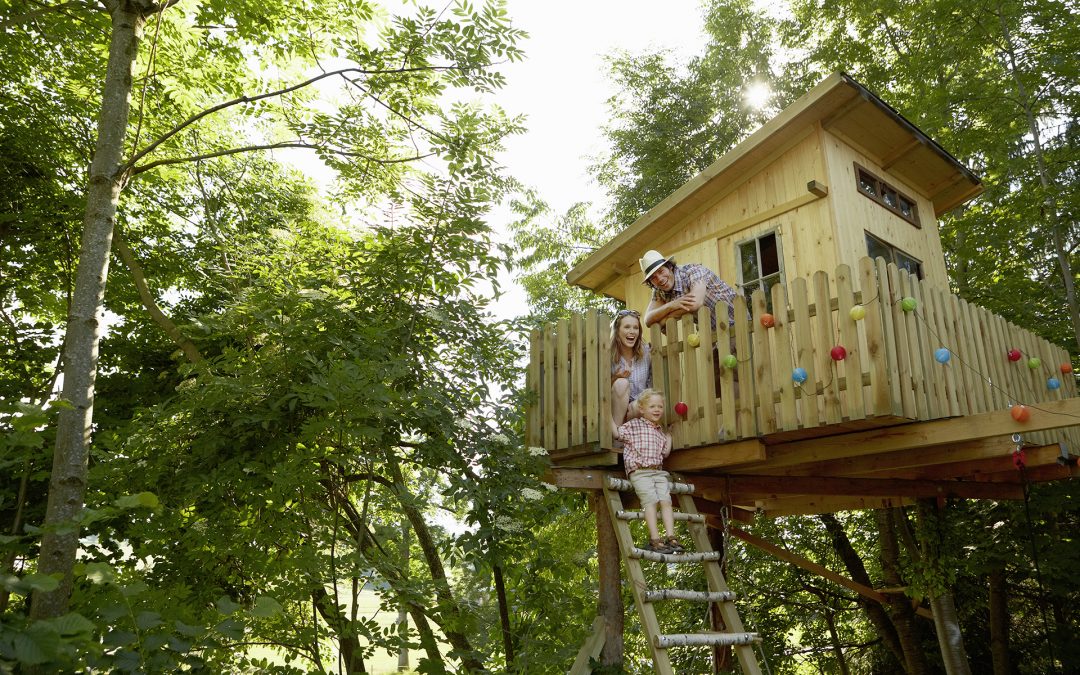Treehouses have been a popular childhood dream for generations. They evoke a sense of nostalgia and bring to mind images of carefree afternoons spent climbing and playing in the branches. However, some people have raised concerns about the impact of treehouses on the trees themselves. While it is true that treehouses need to be securely attached to the trunk and branches in order to be safe, this does not necessarily mean that they are harmful to the tree. In fact, when done correctly, treehouses can actually provide valuable support and protection for the tree. The key is to use high-quality materials that are designed to minimize damage to the tree’s bark. In addition, treehouses should be regularly inspected to ensure that they are still secure. With a little bit of care, treehouses can be enjoyed for generations without harming the trees they are built on.
Table of Contents
Are Treehouses Safe for Trees?
Building your child a treehouse not only provides them with a fun place to play but can also foster an appreciation for trees and the natural world. But some homeowners worry that a treehouse will harm their trees.
And while some treehouses do damage their host trees, it is possible to design, construct and install one in ways that will not cause much harm to the tree. Below, we’ll discuss some of the ways treehouses can cause damage and some of the best ways to avoid stressing your trees when building a treehouse.
Potential Ways Treehouses Can Harm Trees
There’s nothing especially harmful about putting a few pieces of plywood in the branches of a stout tree. Big trees can usually handle the additional weight, and lumber doesn’t present any special risks to the tree. But the way in which you design and install the house can lead to damage or decay.
Some of the ways that treehouses can cause harm include:
Creating Wounds
Most treehouses are secured to the tree via screws or nails. The holes created by these fasteners can damage the tree’s phloem and cambium, and provide a route by which pests, pathogens, and fungi can access the tree’s vulnerable tissues.
Trapping Moisture
Rainwater will run down the sides of the treehouse and work its way into the sheltered nooks and crannies near the junction of the structure and the tree. If allowed to stay damp, these places will provide the perfect conditions for fungal and bacterial growth.
Limiting Normal Growth
Trees not only grow vertically as branches and trunks lengthen but their branches and trunks also increase in girth. But treehouses can limit this growth and prevent branches from increasing their diameter. Anything that constricts a tree’s ability to grow can reduce the tree’s vigor and may lead to weak spots.
Altering the Tree’s Balance
While most large trees can support a couple of hundred extra pounds without difficulty, it is important that this weight is properly distributed across the tree’s branches. If placed away from the tree’s center of gravity, it can alter the balance of the tree and increase the likelihood that it will topple.
Catching Wind
Treehouses can function as “sails” when installed in the branches of the trees, which will cause them to get blown around quite a bit. This can stress the branches of a tree significantly and lead to breakage.
Limiting the Damage Caused: Low-Impact Treehouses
Now that you understand the ways in which treehouses can harm trees, you can embrace a few strategies and techniques to limit the potential for damage. Minimally, this means adopting the following practices:
Use Tree-Friendly Connectors and Hardware
As much as possible, avoid driving nails or screws directly into the trunk or branches. Instead, use adjustable straps or U-bolts to connect the structure to the tree. Additionally, be sure to inspect these connectors regularly and adjust them to allow the tree to grow properly.
Avoid Creating Moisture Pockets
Provide places that allow water to drain and air to flow between the structure and the tree’s bark. If you must create a potential moisture pocket, try to position it so that it receives plenty of sun exposure, which will help it dry out more effectively.
Keep the Treehouse Near the Trunk
Always place the treehouse near the trunk, rather than far out on the tree’s branches. This will help you avoid altering the tree’s balance and reduce the chances that the structure will function as a sail.
Build a Ladder; Don’t Nail Steps to the Trunk
As much as possible, you want to limit your kids’ contact with the tree – they should primarily be standing on the structure, rather than the tree itself. Accordingly, you’ll want to create a standalone ladder or set of stairs to provide access to the treehouse, rather than attaching steps directly to the trunk.

